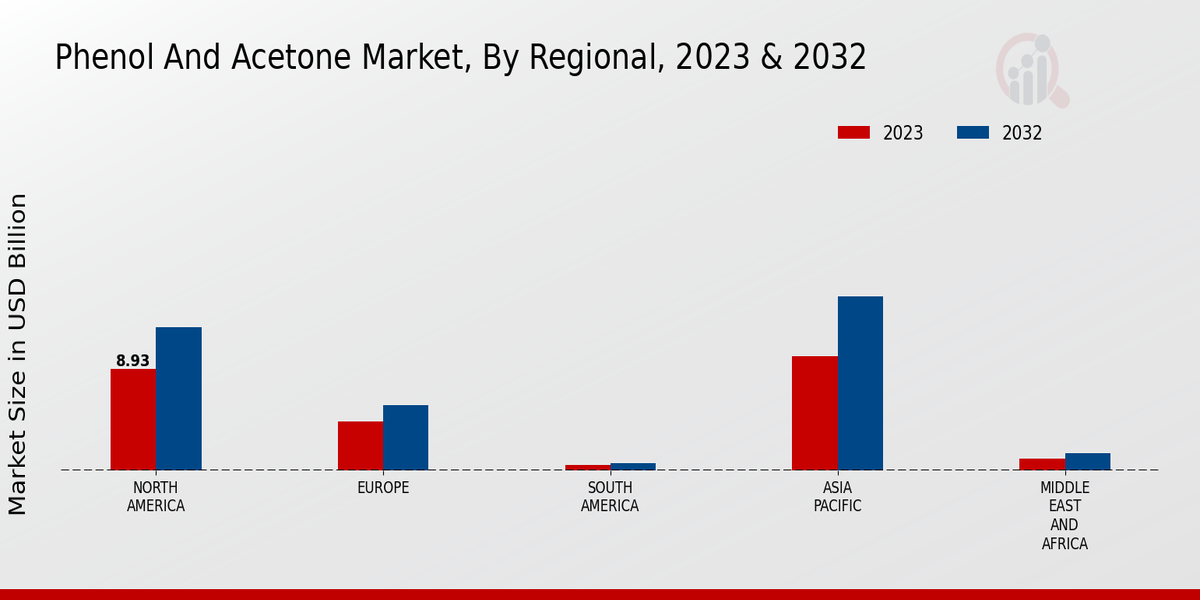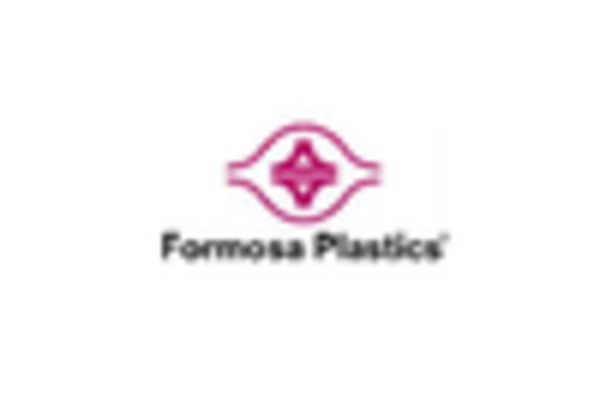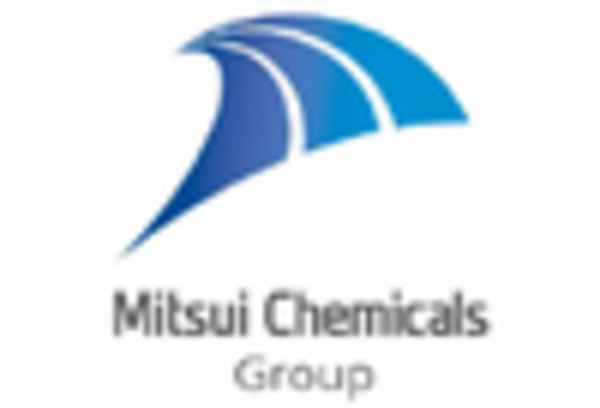Technological Advancements
Technological advancements play a pivotal role in shaping the Phenol and Acetone Market. Innovations in production techniques, such as the development of more efficient catalytic processes, are enhancing yield and reducing waste. These advancements not only lower production costs but also improve the overall quality of phenol and acetone. For instance, the introduction of advanced separation technologies has the potential to streamline operations, thereby increasing profitability for manufacturers. Market data indicates that the adoption of such technologies could lead to a reduction in production costs by approximately 15% over the next five years. As companies continue to invest in research and development, the Phenol and Acetone Market is likely to witness a surge in new product offerings, catering to diverse applications across various sectors.
Sustainable Production Practices
The Phenol and Acetone Market is increasingly influenced by the shift towards sustainable production practices. Manufacturers are adopting eco-friendly methods to reduce environmental impact, which aligns with global regulatory trends favoring sustainability. This transition not only enhances brand reputation but also meets the growing consumer demand for environmentally responsible products. As a result, companies that invest in sustainable technologies may experience a competitive advantage. The market for phenol and acetone is projected to grow, with estimates suggesting a compound annual growth rate of around 4% over the next few years, driven by these sustainable practices. Furthermore, the integration of renewable resources in production processes could lead to cost savings and improved efficiency, thereby attracting more investments into the Phenol and Acetone Market.
Emerging Markets and Economic Growth
Emerging markets are playing a crucial role in the expansion of the Phenol and Acetone Market. As economies in regions such as Asia and Latin America continue to grow, the demand for phenol and acetone is expected to rise significantly. This growth is driven by increasing industrialization, urbanization, and rising disposable incomes, which contribute to higher consumption of products that utilize these chemicals. For instance, the construction and automotive sectors in these regions are expanding rapidly, creating a robust demand for phenol-based products. Market analysts project that the Phenol and Acetone Market could witness a growth rate of approximately 6% in these emerging economies over the next few years. This trend highlights the potential for companies to capitalize on new opportunities in these markets, thereby driving overall industry growth.
Rising Demand from End-Use Industries
The Phenol and Acetone Market is experiencing a notable increase in demand from various end-use industries, particularly in automotive, construction, and pharmaceuticals. The automotive sector, for instance, relies heavily on phenol and acetone for the production of adhesives, coatings, and plastics. As the automotive industry continues to expand, driven by innovations in electric vehicles and lightweight materials, the demand for these chemicals is expected to rise correspondingly. Additionally, the construction industry utilizes phenol in the production of resins and composites, further propelling market growth. Market forecasts suggest that the demand for phenol and acetone could increase by approximately 5% annually, reflecting the robust growth of these end-use sectors. This trend underscores the critical role that phenol and acetone play in supporting industrial advancements.
Regulatory Compliance and Safety Standards
Regulatory compliance and safety standards are becoming increasingly stringent within the Phenol and Acetone Market. Governments and regulatory bodies are implementing more rigorous guidelines to ensure the safe handling and use of these chemicals. This trend compels manufacturers to invest in compliance measures, which may include upgrading facilities and adopting safer production methods. While this may initially increase operational costs, it also presents an opportunity for companies to enhance their safety protocols and improve their market positioning. Furthermore, adherence to these regulations can lead to reduced liability and improved public perception. As the industry adapts to these evolving standards, the Phenol and Acetone Market is likely to see a shift towards safer, more responsible practices that align with consumer expectations.


















Leave a Comment